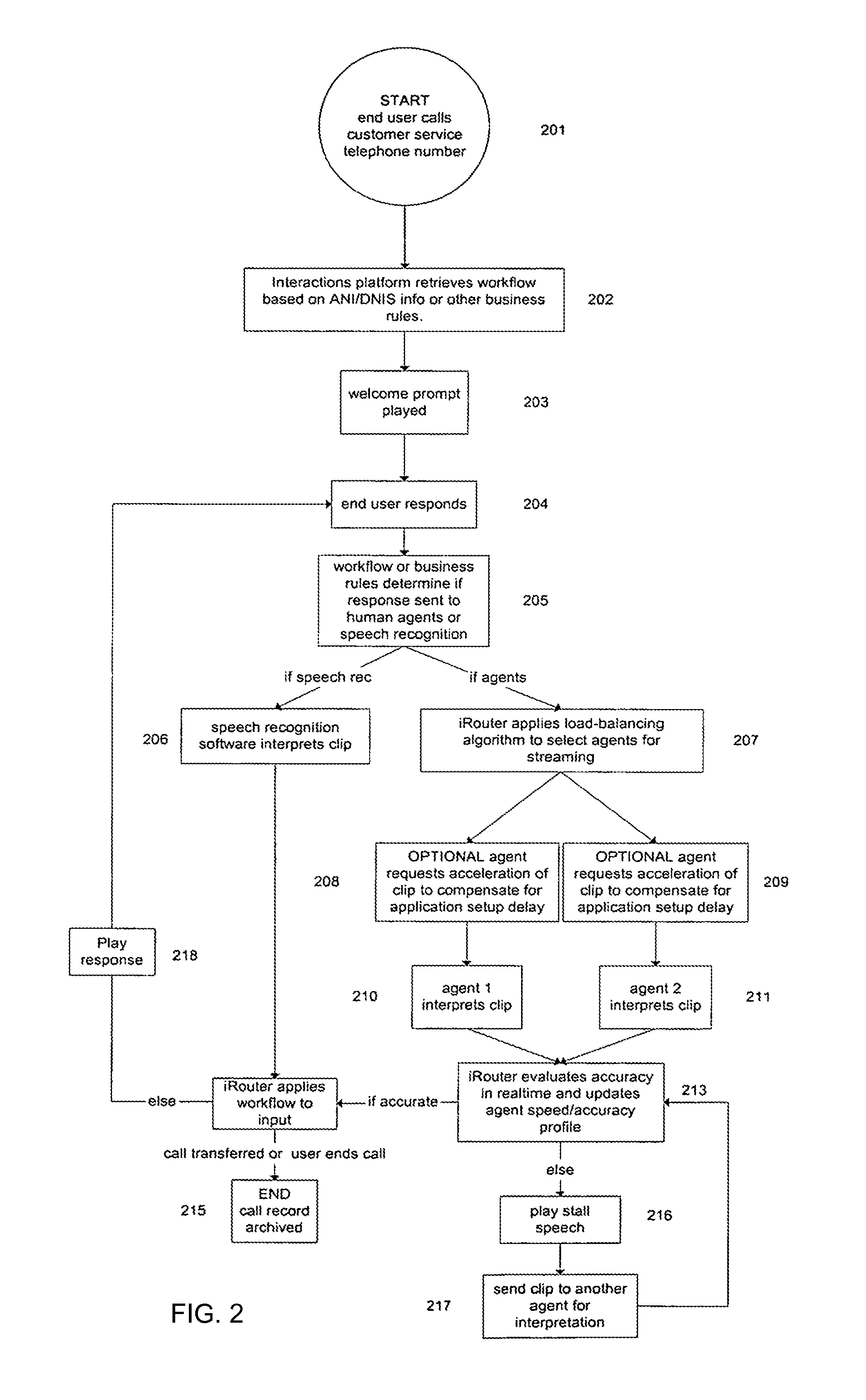Automated speech recognition system for natural language understanding
a natural language and automatic recognition technology, applied in the field of interactive response communication systems, can solve the problems of inconsistent or downright frustrating, provide less than satisfactory customer experience, and increase the training difficulty of asrs through ia-supplied intents, and achieve steady work pace and reduce the effect of training
- Summary
- Abstract
- Description
- Claims
- Application Information
AI Technical Summary
Benefits of technology
Problems solved by technology
Method used
Image
Examples
Embodiment Construction
[0035]Description of operation of an interactive response system is provided first, according to FIGS. 1-6, to provide context for the machine learning system and processes described thereafter. Note that unless otherwise evident, the terms “intent” and “meaning” used herein refer to the contextual reason corresponding to an utterance (for instance, having a system determine a caller's business intent to make a new flight reservation). In contrast, the term “recognize” and its derivatives is generally used herein for the process of converting a sound to its corresponding word.
[0036]FIG. 1 illustrates one embodiment of an architecture for connecting an interactions platform 102 to an interactive response system 100 through an interactive router 101 (herein referred to as an “iRouter”). As shown in FIG. 1, interactions platform 102 is connected to a customer 103 through communications link 104. Interactions platform 102 is also connected to interactive response system 100 at iRouter 1...
PUM
 Login to View More
Login to View More Abstract
Description
Claims
Application Information
 Login to View More
Login to View More - R&D
- Intellectual Property
- Life Sciences
- Materials
- Tech Scout
- Unparalleled Data Quality
- Higher Quality Content
- 60% Fewer Hallucinations
Browse by: Latest US Patents, China's latest patents, Technical Efficacy Thesaurus, Application Domain, Technology Topic, Popular Technical Reports.
© 2025 PatSnap. All rights reserved.Legal|Privacy policy|Modern Slavery Act Transparency Statement|Sitemap|About US| Contact US: help@patsnap.com



